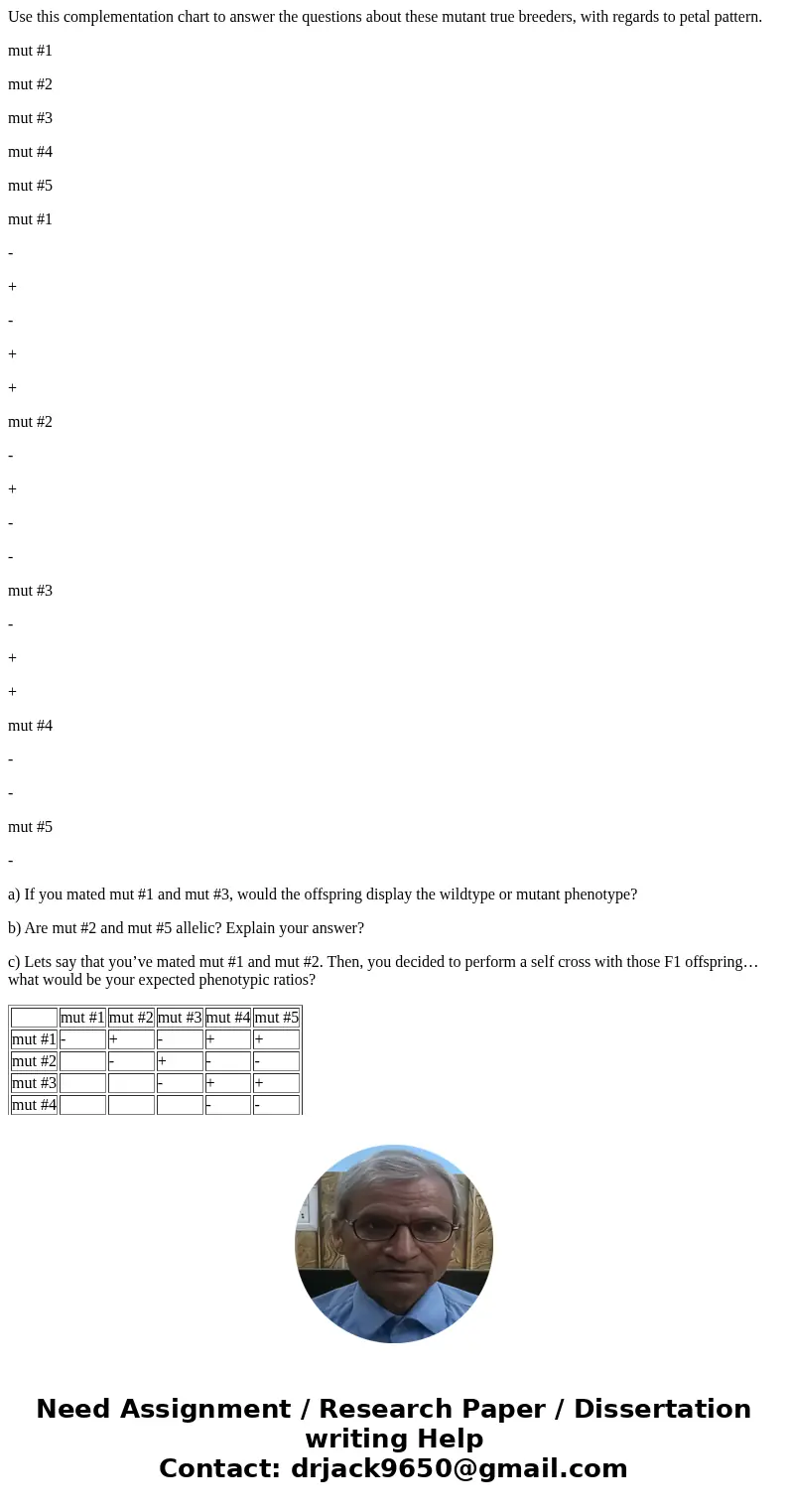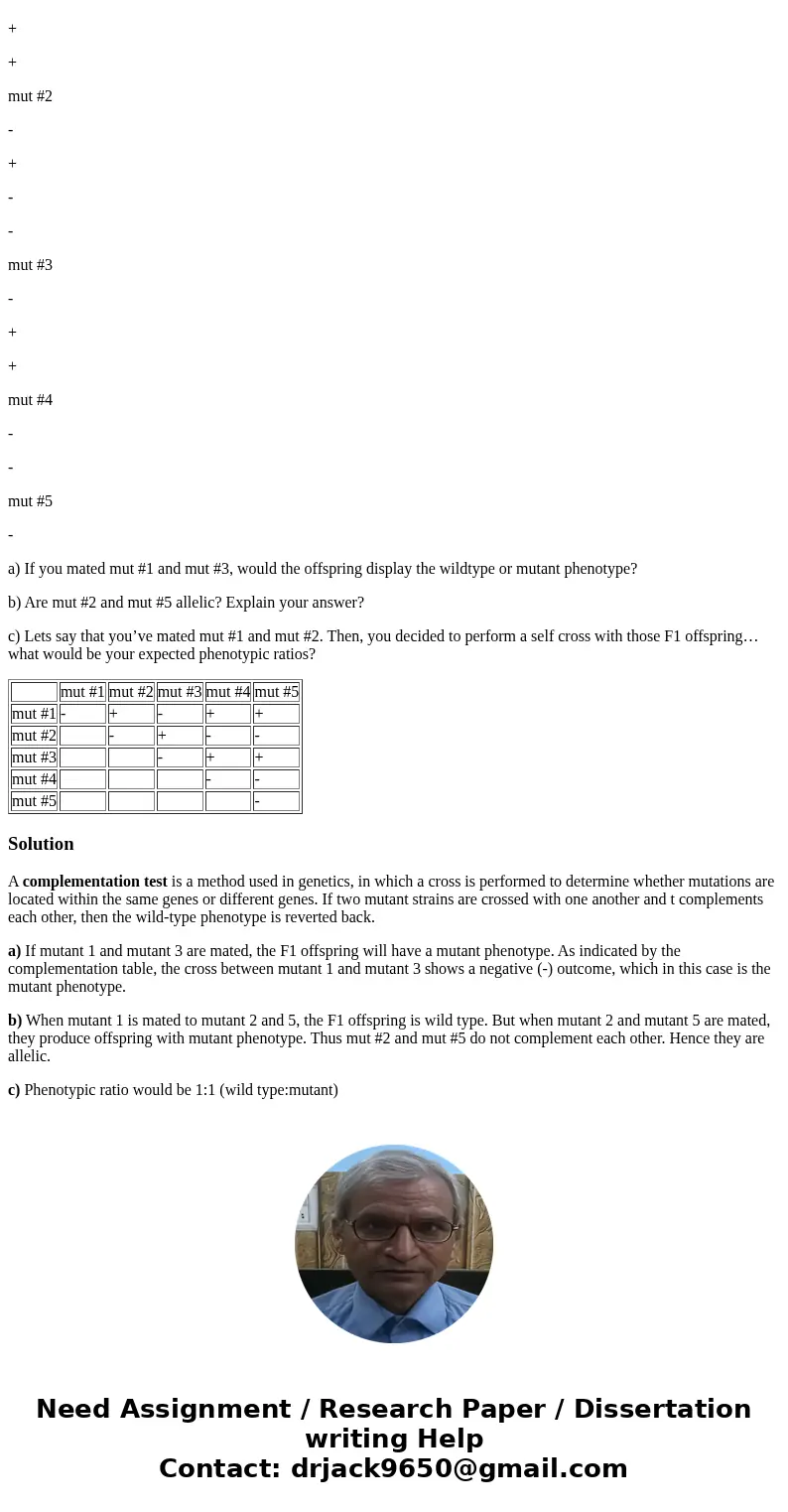Use this complementation chart to answer the questions about
Use this complementation chart to answer the questions about these mutant true breeders, with regards to petal pattern.
mut #1
mut #2
mut #3
mut #4
mut #5
mut #1
-
+
-
+
+
mut #2
-
+
-
-
mut #3
-
+
+
mut #4
-
-
mut #5
-
a) If you mated mut #1 and mut #3, would the offspring display the wildtype or mutant phenotype?
b) Are mut #2 and mut #5 allelic? Explain your answer?
c) Lets say that you’ve mated mut #1 and mut #2. Then, you decided to perform a self cross with those F1 offspring… what would be your expected phenotypic ratios?
| mut #1 | mut #2 | mut #3 | mut #4 | mut #5 | |
| mut #1 | - | + | - | + | + |
| mut #2 | - | + | - | - | |
| mut #3 | - | + | + | ||
| mut #4 | - | - | |||
| mut #5 | - |
Solution
A complementation test is a method used in genetics, in which a cross is performed to determine whether mutations are located within the same genes or different genes. If two mutant strains are crossed with one another and t complements each other, then the wild-type phenotype is reverted back.
a) If mutant 1 and mutant 3 are mated, the F1 offspring will have a mutant phenotype. As indicated by the complementation table, the cross between mutant 1 and mutant 3 shows a negative (-) outcome, which in this case is the mutant phenotype.
b) When mutant 1 is mated to mutant 2 and 5, the F1 offspring is wild type. But when mutant 2 and mutant 5 are mated, they produce offspring with mutant phenotype. Thus mut #2 and mut #5 do not complement each other. Hence they are allelic.
c) Phenotypic ratio would be 1:1 (wild type:mutant)


 Homework Sourse
Homework Sourse